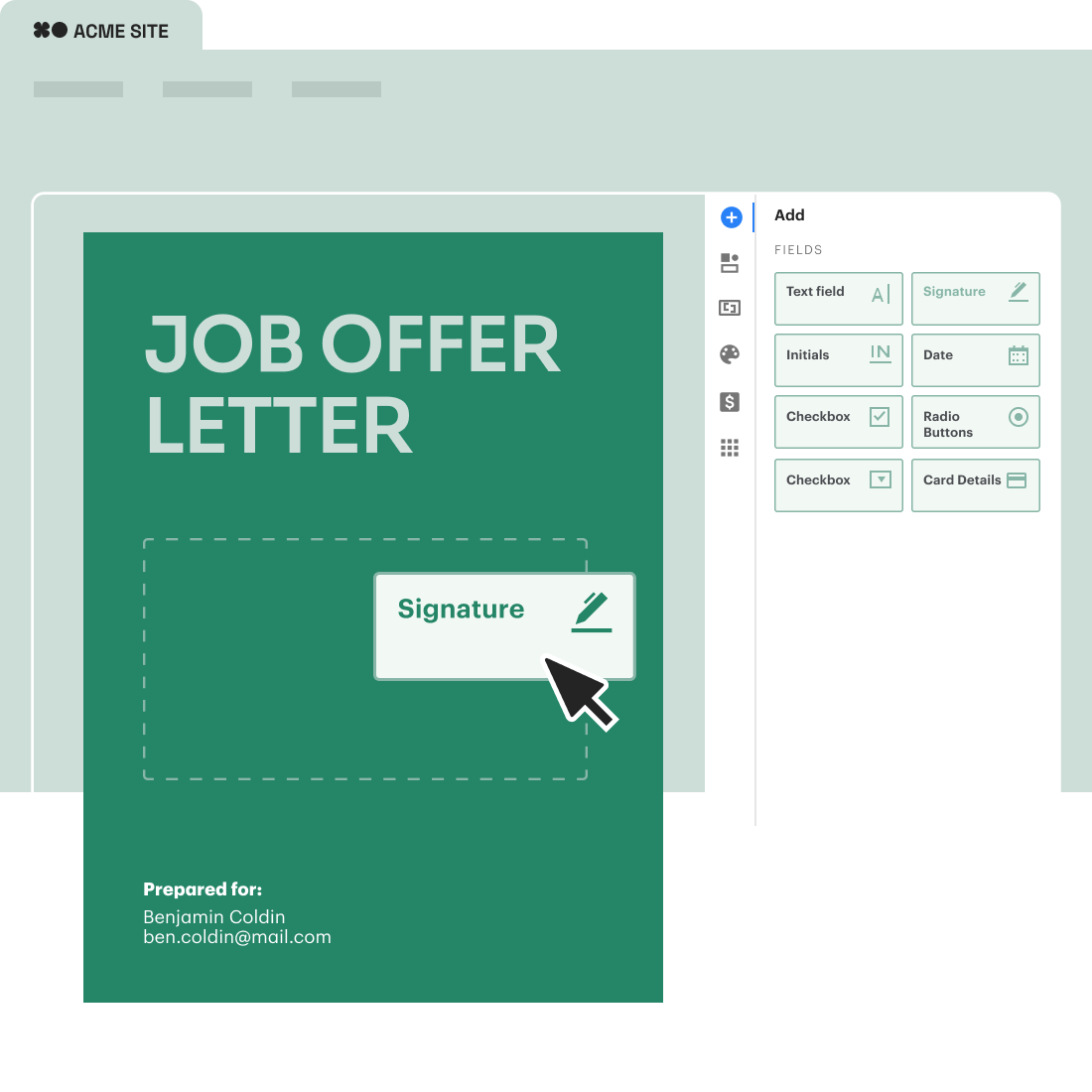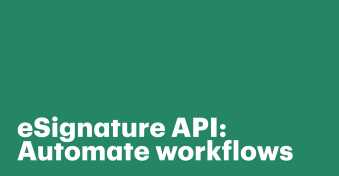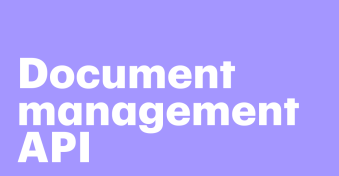Today’s buyers don’t just expect speed — they expect seamlessness. Every interaction with your product is part of the customer experience. From trial to renewal, users want it to feel smooth, intuitive, and on-brand. So when you redirect them to a third-party tool to review or sign a contract, proposal, or quote, it’s not just a hiccup. It’s a crack in the experience.
And it’s a costly one.
In fact, 80% of customers said they have switched brands because of poor customer experience, according to a recent Qualtrics survey.
That’s why more teams, especially those with product-led growth (PLG) motions, are embedding document workflows directly into their products. Instead of sending users away to complete critical steps, they’re keeping the flow right where the user already is — inside the product experience.
Let’s explore why embedded document workflows are becoming the new standard for revenue teams, product teams, and anyone invested in user activation and conversion.
Embedded workflows: Growth through better user experience
Think about the last time you signed up for a tool and hit a sudden wall — a jarring redirect to another site for a quote or contract approval. It feels disconnected. It signals, “This part isn’t really ours.”
That’s the problem embedded document processes solve. When documents are triggered, populated, signed, and stored within your product, they feel like a natural extension of the experience.
The embedded advantage
Here’s what embedded document workflow automation looks like in practice:
- Triggered by in-app activity: A user hits “Upgrade Plan” or “Request Proposal,” and the right doc appears instantly.
- Pre-filled with user context: Fields auto-populate from product data. No redundant input. No errors.
- Styled to match your brand: The document doesn’t look like a document — it looks like your product.
- Signed without leaving the app: Fewer steps, fewer clicks, more completions.
This approach doesn’t just look better — it performs better. Embedded workflows:
- Reduce drop-off during conversion-critical moments
- Increase document completion rates
- Accelerate deal velocity
- Create a premium, polished brand experience
In a PLG motion, where every touchpoint influences retention and expansion, that’s a strategic advantage.
Appcues: Why embedded flows drive more completions
Let’s ground this in real-world insight.
Appcues, a leader in user onboarding and product adoption, has seen firsthand how embedding key workflows inside the product unlocks more user momentum.
“Here’s something we’ve seen work again and again: when teams use key workflows (things like onboarding checklists or contract approval steps) inside the product itself, completion rates go up. Not because the tasks are new or fancy, but because they’re right there when users need them.
It sounds obvious, but surprisingly few teams do it. Instead of pointing them somewhere else, you have to build the action into the flow. It’s one of those small shifts that can quietly unlock a lot more momentum.”
— Bill Williams, Lifecycle Marketer at Appcues
Context is everything. When you meet users where they are — at the moment they need to take action — you eliminate the mental tax of switching contexts or chasing down tasks later. That’s a UX win and a revenue win.
🔗 Learn more about onboarding flows from Appcues
Why integrations aren’t enough
Some teams assume they’re “covered” by having a Zapier Zap or CRM integration. That’s a start, but it’s not the same as an embedded experience.
Integrations operate between tools. Embedded flows operate within the product.
The difference? Control, visibility, and a smoother user experience.
- Integrations often require toggling between tools, waiting for syncs, or relying on webhook timing. Plus, they can add unnecessary dependencies that slow you down.
- Embedding documents through APIs gives you full control over when, how, and where the document appears.
When you’re scaling, this distinction matters. The more your product experience becomes automated and self-serve, the more costly it becomes to interrupt that journey.
How PandaDoc makes embedded workflows possible
If you want embedded document workflows, you need more than a plug-and-play integration. You need API access and the ability to control document behavior programmatically.
The PandaDoc API gives you that flexibility.
How it works:
- Create and send documents based on in-app actions like a plan upgrade, signed quote, or onboarding step
- Auto-fill fields using product or CRM data to keep the experience frictionless
- Style the document viewer to match your UI and brand
- Let users sign without leaving the product experience
You can even embed the e-signature UI directly within your workflow. And because it’s powered by our robust document engine, you get analytics, status tracking, and compliance — no need to build any of it from scratch.

For revenue teams, that means quoting and contracting can become self-serve without losing oversight. For product teams, it means onboarding, approvals, and renewals stay in flow.
AeroNet cuts contract generation time by 80%
That flexibility isn’t just theoretical — it’s powering measurable results for teams in the field.
Take AeroNet, a hybrid B2B/B2C ISP based in Puerto Rico. Their team was managing a high volume of custom contracts, each requiring tailored pricing, bundles, and terms. With their previous solution, every contract took 10–12 minutes to build manually, which reduced productivity and increased errors.
After switching to the PandaDoc API and embedding document workflows into their in-house system, AeroNet transformed the experience for both reps and customers:
- Dynamic contract creation: Pricing tables automatically adjust as options change, no manual editing needed.
- CRM-connected automation: Key customer data flows directly into documents without copy-pasting.
- Massive efficiency gains: What used to take over 10 minutes now takes just 2 — an 80% reduction in contract creation time.
- Built directly into their platform: Reps never leave the AeroNet interface, keeping everything in flow.
“PandaDoc API is naturally dynamic rather than needing manual adjustment. Since switching to PandaDoc it takes us around 80% less time to create each contract.”
—Jean Pagán, Chief Software Engineer, AeroNet
For AeroNet, embedding document workflows wasn’t just a UX improvement — it was a strategic upgrade to how their business operates at scale.
Read the full case study to learn more.
The ROI of embedded flows
At a high level, embedding document workflows results in three key outcomes:
1. Fewer drop-offs
When users don’t have to leave your product to complete a task, they’re more likely to follow through. This leads to higher document completion rates at critical moments.
2. Faster time to value
The quicker a user can complete a task — from signing a quote to accepting a service agreement — the faster they move through your funnel. Embedded flows speed up every step.
3. Stronger brand trust
A polished, native-feeling experience shows users that you value their time and attention. It keeps the interaction professional and builds confidence in your product.
Ready to embed document workflows?
If you’re looking to scale faster, improve user activation, or simplify your quoting and contracting process, the PandaDoc API can help you get there — without adding extra work to your roadmap.
Explore PandaDoc’s API page and see what’s possible.


